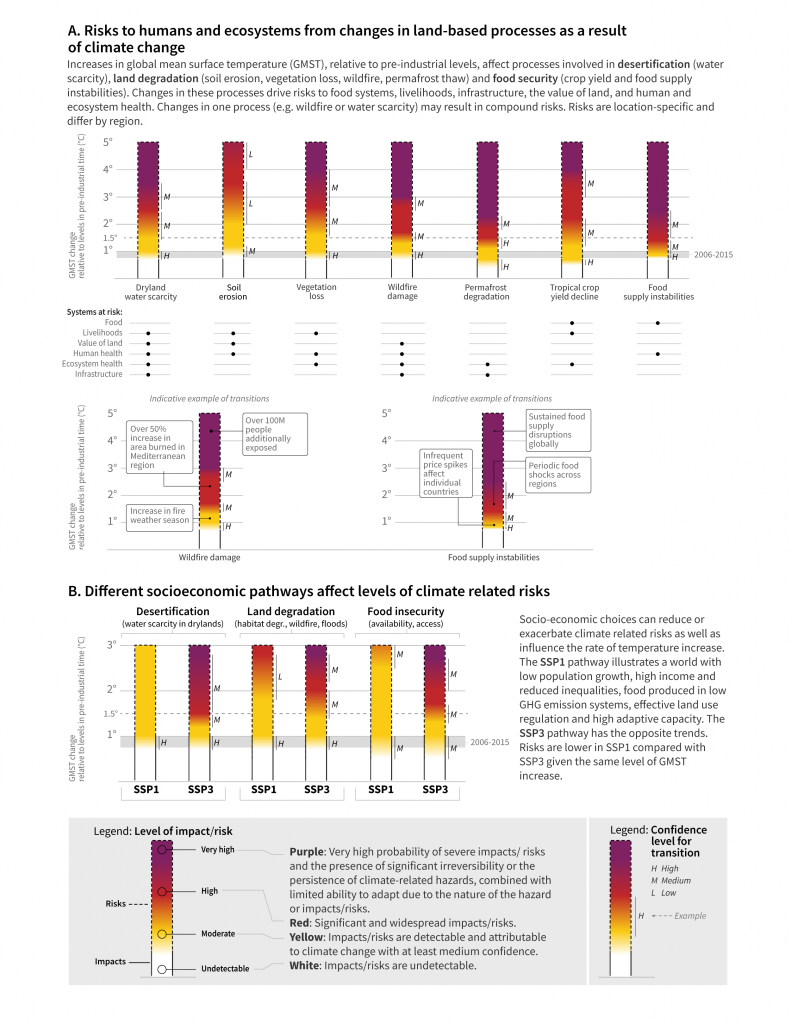
Figure SPM.2
Risks to land-related human systems and ecosystems from global climate change, socio-economic development and mitigation choices in terrestrial ecosystems As in previous IPCC reports the literature was used to make expert judgements to assess the levels of global warming at which levels of risk are undetectable, moderate, high or very high, as described further in Chapter 7 and other parts of the underlying report. The Figure indicates assessed risks at approximate warming levels which may be influenced by a variety of factors, including adaptation responses. The assessment considers adaptive capacity consistent with the SSP pathways as described below. Panel A: Risks to selected elements of the land system as a function of global mean surface temperature {2.1, Box 2.1, 3.5, 3.7.1.1, 4.4.1.1, 4.4.1.2, 4.4.1.3, 5.2.2, 5.2.3, 5.2.4, 5.2.5, 7.2, 7.3, Table SM7.1}. Links to broader systems are illustrative and not intended to be comprehensive. Risk levels are estimated assuming medium exposure and vulnerability driven by moderate trends in socioeconomic conditions broadly consistent with an SSP2 pathway. {Table SM7.4} Panel B: Risks associated with desertification, land degradation and food security due to climate change and patterns of socio-economic development. Increasing risks associated with desertification include population exposed and vulnerable to water scarcity in drylands. Risks related to land degradation include increased habitat degradation, population exposed to wildfire and floods and costs of floods. Risks to food security include availability and access to food, including population at risk of hunger, food price increases and increases in disability adjusted life years attributable due to childhood underweight. Risks are assessed for two contrasted socio-economic pathways (SSP1 and SSP3 {Box SPM.1}) excluding the effects of targeted mitigation policies. {3.5, 4.2.1.2, 5.2.2, 5.2.3, 5.2.4, 5.2.5, 6.1.4, 7.2, Table SM7.5} Risks are not indicated beyond 3°C because SSP1 does not exceed this level of temperature change. All panels: As part of the assessment, literature was compiled and data extracted into a summary table. A formal expert elicitation protocol (based on modified-Delphi technique and the Sheffield Elicitation Framework), was followed to identify risk transition thresholds. This included a multi-round elicitation process with two rounds of independent anonymous threshold judgement, and a final consensus discussion. Further information on methods and underlying literature can be found in Chapter 7 Supplementary Material.